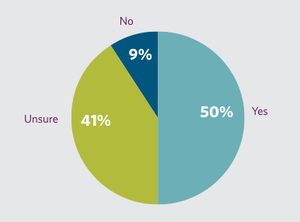
Q&A with Ron Leopold: Creating a communication strategy and using social media for benefits communication
Last week we interviewed Ron Leopold about his reactions to our Inside Benefits Communication Survey Report. Specifically, we discussed employers’ biggest benefits communication challenges and goals. This second interview looks at linking employers’ goals with a communication strategy, as well as using social media for benefits communication.
Benz: Our survey showed that people don’t know if their communications are helping them meet their goals, and few are documenting their strategy. Why do you think that’s the case?
 Ron: A lot of employers shoot from the hip when it comes to communications. There are many HR teams that don’t have a background in developing a communication strategy. Benefits communication is much more successful when you integrate a formal strategy. More employers may want to think about how to leverage available resources out there to help them do that.
Ron: A lot of employers shoot from the hip when it comes to communications. There are many HR teams that don’t have a background in developing a communication strategy. Benefits communication is much more successful when you integrate a formal strategy. More employers may want to think about how to leverage available resources out there to help them do that.
Benz: How do benefits and benefits communication connect to the overall goals of the business?
Ron: Any time you look at how benefits have potential to impact business goals, it’s always dependent on effectively communicated programs. Benefits can do great things for the employee, but that’s implying that the benefits are communicated. When an employee feels less risk, they’re grateful to their employer and thankful that their employer is giving them something they wouldn’t get anywhere else. This all drives employee loyalty, engagement and satisfaction, which support the overall goals of a business.
Benz: How does that sentiment parlay to real-world situations where employers are asking people to take a more active role in their wellness and health care and requiring people to do more? How do you roll out those programs and keep it positive?
Ron: Delicately. Employers are shifting costs to employees because they have to. The price tag has become so unwieldy that it’s becoming an obstacle to financially running a company. Employers are left with no alternative. Wellness programs are about reducing costs and improving productivity, but they can also be about improving employee loyalty. If an employee does well through an employer program like weight loss, the employer gets some credit for having provided that benefit.

 Benz: Why do you think social media adoption in benefits communication is still low?
Benz: Why do you think social media adoption in benefits communication is still low?

 Ron: In many cases decision makers know social media is an important phenomenon, but they don’t truly understand it. It’s common to find baby boomers who don’t clearly understand the benefits of social media tools, which creates a strong reluctance. And employers have legal and confidentiality concerns. Eventually it will become standard fare. We’re still learning what works and what doesn’t work and where these capabilities may be applied. The benefits industry will have breakthrough applications that will show how social media can make a difference.
Ron: In many cases decision makers know social media is an important phenomenon, but they don’t truly understand it. It’s common to find baby boomers who don’t clearly understand the benefits of social media tools, which creates a strong reluctance. And employers have legal and confidentiality concerns. Eventually it will become standard fare. We’re still learning what works and what doesn’t work and where these capabilities may be applied. The benefits industry will have breakthrough applications that will show how social media can make a difference.
Benz: How can different communication channels help with some of the challenges employers are facing?
Ron: Levels of comfort with technology vary tremendously. Think of someone who’s 17 versus someone who’s 70. You wouldn’t think twice about texting the 17-year-old, but you should think twice about texting the 70-year-old. It’s important to have realistic expectations of technological literacy. Many older baby boomers are fairly comfortable with social media and mobile tools. But don’t abandon traditional means of communication. Use multiple channels and let employees decide the types of communications that work best for them, so they can stay engaged year round.
Ron Leopold is an independent consultant and a well-recognized industry thought leader focusing on the future of work, health and employee benefits.
Download the full results from our Inside Benefits Communication Survey here.

Jennifer Benz, SVP Communications Leader, has been on the leading edge of employee benefits for more than 20 years and is an influential voice in the employee benefits industry.
